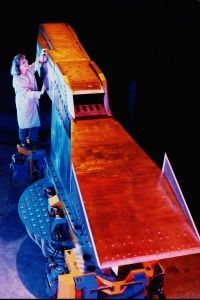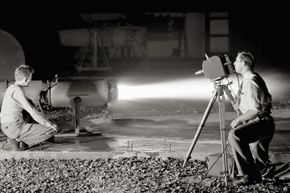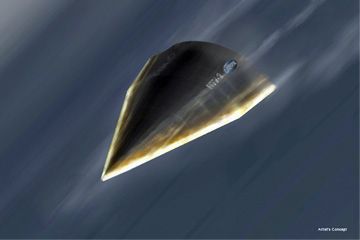Key Takeaways
- A ramjet is a type of air-breathing jet engine that operates on the principle of compressing incoming air without the need for rotating parts.
- It relies on the high-speed forward motion of the aircraft to compress air, making it suitable for supersonic and hypersonic flight.
- Ramjets are efficient at high speeds but require other propulsion systems for takeoff and acceleration, due to their inability to produce thrust at low speeds.
As anyone who's ever belly flopped off a high dive can tell you, when you hit a fluid without giving it time to get out of the way, it tends to hit back. Divers beat physics by taking a more streamlined plunge, and faster cars and aircraft do it by sporting more aerodynamic shapes. But there comes a point, near the sound barrier, where streamlining is not enough -- a speed at which the very air that keeps your plane aloft begins to hammer you with seemingly insurmountable drag, teeth-rattling turbulence and brutal shock waves. Indeed, many believed this sound barrier unbreakable until, on Oct. 14, 1947, Chuck Yeager's rocket-powered Bell X-1 proved them wrong.
But what if you could turn all that piled-up air to your advantage? What if, instead of churning through it with propellers or burning through it with rockets, you could pack it into a specially shaped tube, pump it up with an explosion and fire it out a nozzle at supersonic speeds, all with no major moving parts? You'd have a very special type of jet engine, a "flying stovepipe" fit for slicing through the sky at thousands of miles per hour. You'd have a ramjet.
Advertisement
But the ramjet's apparent simplicity is deceptive; it takes cutting-edge aeronautical engineering, modern materials and precision manufacturing to pull one off -- which partly explains why an idea nearly as old as powered flight was repeatedly taken up and cast aside for decades before achieving limited success during the Cold War.
Unlike its main speed competition, the rocket, which burns fuel using onboard oxidizers like ammonium nitrate, potassium chlorate or ammonium chlorate, ramjets breathe air. Thus, while rockets can operate in the near vacuum of space, ramjets must fly through the atmosphere. They must do so at very high speeds, too -- around Mach 2.5-3.0, or three times the speed of sound -- because ramjets work by harnessing ram pressure, the natural air compression brought on by an aircraft's high speed. In other words, ramjets make allies of the very shock waves and compression forces that once opposed high-speed flight; they literally go with the flow [sources: Encyclopaedia Britannica; NASA].
Ramjets are more efficient over long distances than rockets but suffer a significant disadvantage: They are useless at low velocities. Consequently, they rely on booster rockets or other vehicles to get them up to speed. Standalone ramjet aircraft typically use hybrid engines [source: NASA].
If that explanation flew past you at supersonic speed, it's probably because we skipped over a lot of cool and interesting stuff. Let's look at how jet engines have developed to produce this modern marvel.
Advertisement




